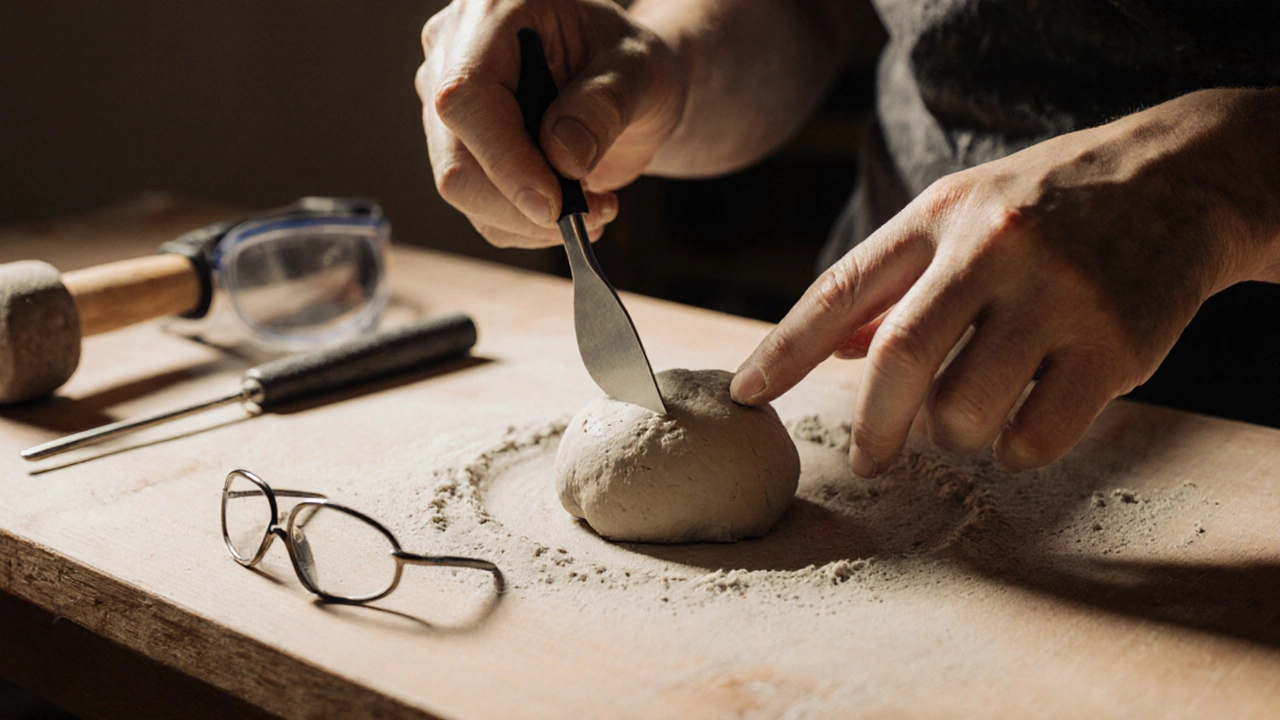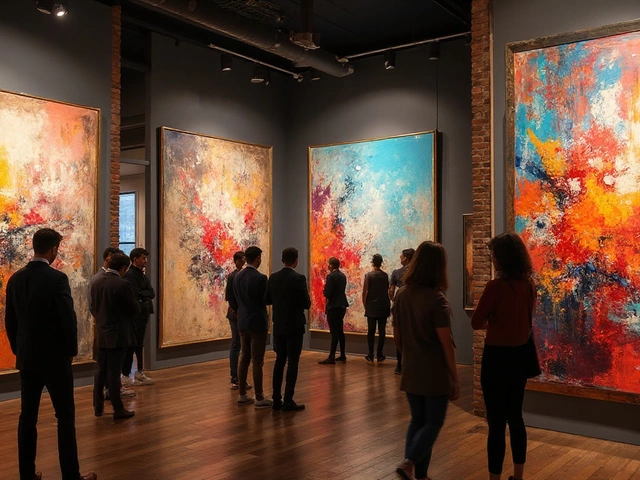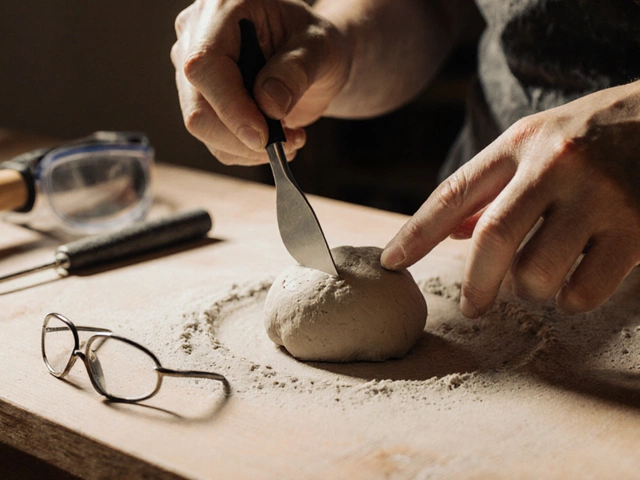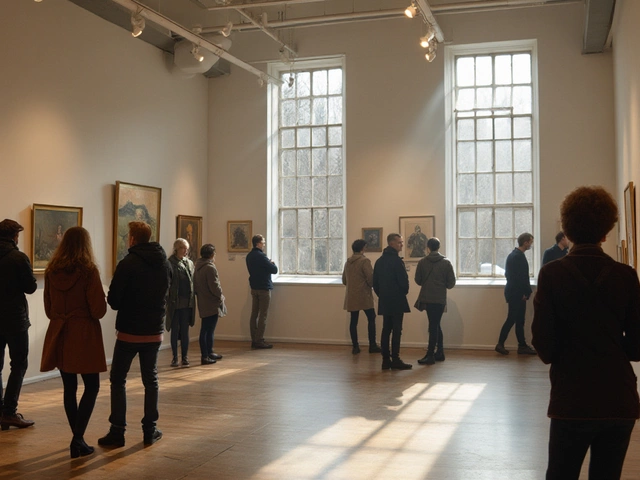Sculpture Material & Cost Calculator
Choose Your Material
Your Project Estimate
Estimated Costs
Recommended Project
Select your material and budget to see your recommended project...
When you first pick up a chisel, Sculpture is the art of shaping three‑dimensional forms from materials such as clay, stone, metal or wood. It may look intimidating, but the core ideas are simple: choose a material, gather a few tools, and start shaping. Below you’ll find a step‑by‑step roadmap that takes you from zero experience to your first finished piece.
Quick Summary
- Start with affordable, forgiving materials like air‑dry clay or soapstone.
- Invest in a basic tool kit: carving knife, wire loop chisel, mallet, and sandpaper.
- Set up a small, well‑ventilated workspace with a sturdy workbench.
- Begin with a simple project-model a fruit, a basic bust, or a geometric abstract.
- Prioritize safety: wear goggles, gloves, and a dust mask when working with stone or metal.
Essential Materials for Beginners
Choosing the right material determines how quickly you can learn. Here are the top five options for 2025 beginners:
| Material | Typical Tools | Difficulty | Cost (USD) | Best For |
|---|---|---|---|---|
| Air‑dry Clay | Modeling tools, wire cutter | Easy | 10-30 | Modeling, learning form |
| Soapstone | Carving knife, wire loop chisel, sandpaper | Medium | 15-40 per pound | Carving basics |
| Polymer Clay | Modeling tools, oven | Easy | 5-20 per package | Miniatures, detail work |
| Plaster | Mixing bucket, spatula, mold | Medium | 8-25 per bag | Mold making, casting |
| Bronze (lost‑wax) | Wax, kiln, crucible, sand mold | Hard | 200+ (for small projects) | Professional practice |
Basic Tool Kit
You don’t need a full workshop to start. A handful of well‑chosen tools will cover most beginner projects.
- Carving Knife - a small, curved blade for detail work (often called a "fluke").
- Wire Loop Chisel - ideal for removing larger chunks of stone or wood.
- Rubber Mallet - provides controlled force without damaging the tool.
- Sandpaper (grits 80-400) - smooths surfaces as you finish.
- Safety gear: goggles, dust mask, and cut‑resistant gloves.
All of these can be bought as a starter set for under $50, especially if you shop at local art supply stores or online marketplaces.
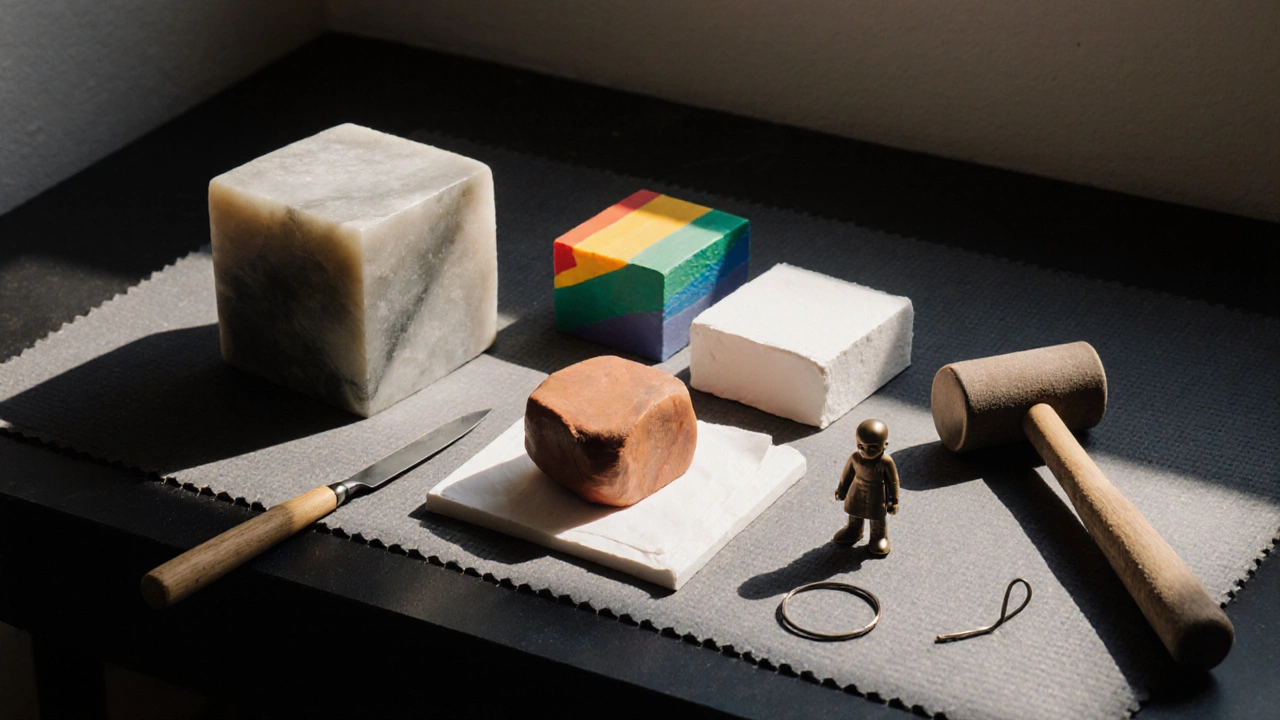
Setting Up a Workspace
Even a small apartment corner can become a functional studio with a few tweaks:
- Choose a sturdy workbench or a heavy table that won’t wobble.
- Cover the surface with a self‑adhesive rubber mat to protect both the bench and your tools.
- Ensure good ventilation - open a window or use a small fan when carving stone or sanding.
- Keep a bucket of water nearby if you’re working with clay or stone; it reduces dust and helps with shaping.
- Organize tools in a pegboard or a simple toolbox so you can grab what you need without hunting.
First Projects: Three Easy Paths
Pick one of these beginner‑friendly routes and you’ll have a finished piece within a weekend.
1. Modeling with Air‑Dry Clay
Air‑dry clay is forgiving: you can add or scrape away material without firing. Start by rolling a slab, then sculpt a simple fruit (apple or orange). Use a modeling tool or an old toothbrush to create texture. Let it dry for 24hours, then sand with fine‑grit sandpaper and apply acrylic paint for a finished look.
2. Carving a Soapstone Cube
Soapstone’s softness makes it perfect for learning carving technique. Cut a 3‑inch cube, then outline a basic bust or animal silhouette with a pencil. Remove large sections with the wire loop chisel, then refine details with the carving knife. Finish by sanding progressively finer grits and sealing with mineral oil to bring out the stone’s natural glow.
3. Building a Wire Armature and Adding Clay
If you want to try a larger figure, start with a 10‑inch armature made of galvanized wire. Twist the wire into a rough skeleton, wrap it in newspaper for bulk, then cover it with clay. This technique lets you explore anatomy without the weight of solid stone. Once the clay dries, you can either leave it as a mixed‑media piece or cast it in plaster for durability.
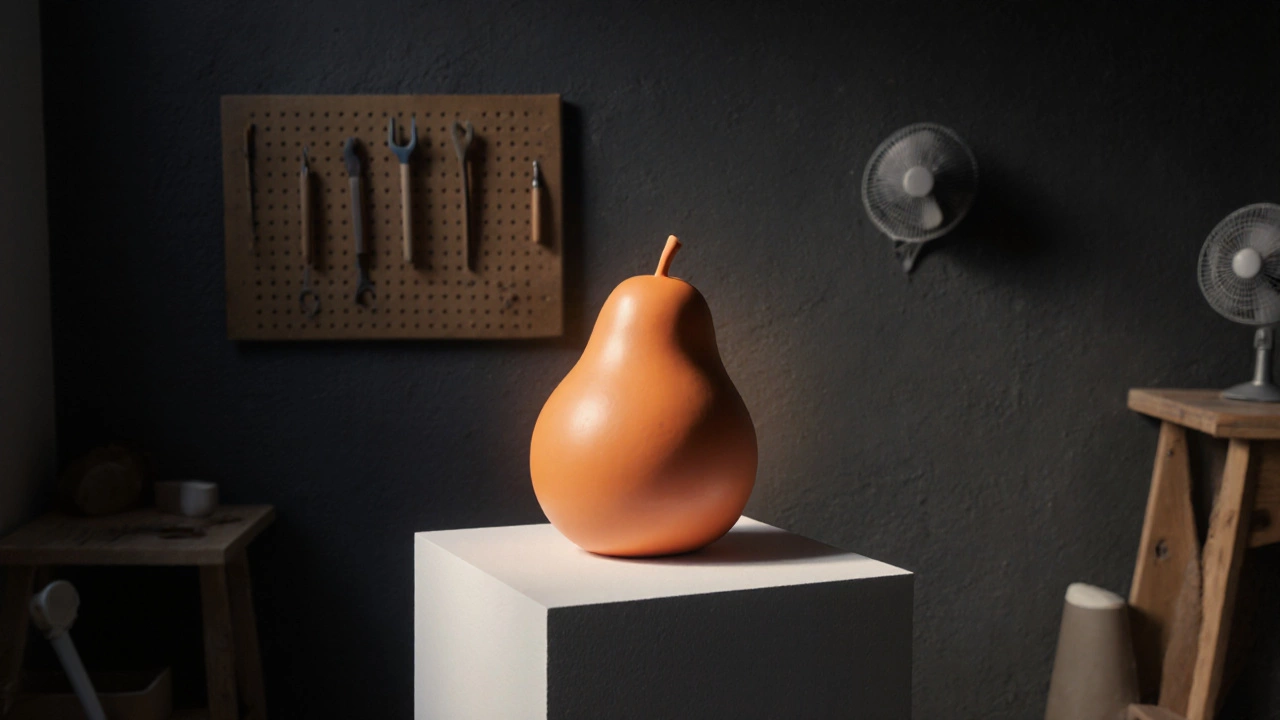
Safety First
Even simple projects can produce dust or sharp fragments. Follow these habits every time you work:
- Wear safety goggles whenever you chip, sand, or use a power tool.
- Use a dust mask (N95 or better) while carving stone, plaster, or sanding.
- Keep a fire extinguisher nearby if you’re using a kiln or working with hot wax.
- Never work alone when casting metal; have a friend on standby in case of spills.
Next Steps and Resources
After you’ve completed your first piece, consider these avenues to deepen your practice:
- Join a local art guild or community studio - Vancouver’s Vancouver Sculpture Society offers weekly critique nights.
- Enroll in a short course at a community college - many offer a “Intro to Modeling & Carving” class lasting 8 weeks.
- Experiment with metal casting - start with a simple wax‑up and use a small electric kiln for lost‑wax bronze.
- Document your process on Instagram or a personal blog; sharing helps you get feedback and stay motivated.
Frequently Asked Questions
What material should a total beginner start with?
Air‑dry clay is the most beginner‑friendly because it requires no kiln, cures at room temperature, and is cheap. Soapstone is a close second for those who prefer carving rather than modeling.
Do I need a spacious studio to sculpt?
No. A small corner with a sturdy table, good lighting, and ventilation is enough for most beginner projects. Larger works naturally need more space, but you can always scale up later.
How much should I expect to spend on my first set of tools?
A basic kit (carving knife, wire loop chisel, rubber mallet, sandpaper, safety gear) can be assembled for $30‑$60. Many art stores bundle these items, and you can find used tools on resale platforms for even less.
Is it necessary to take formal classes?
Formal classes aren’t required, but they accelerate learning by giving you feedback and exposing you to techniques you might not discover on your own. Community workshops are affordable and usually meet once a week.
Can I sell my early sculptures?
Absolutely. Small pieces made from clay or polymer clay are popular on platforms like Etsy. Just be clear about the material and finishing process so buyers know what they’re getting.
